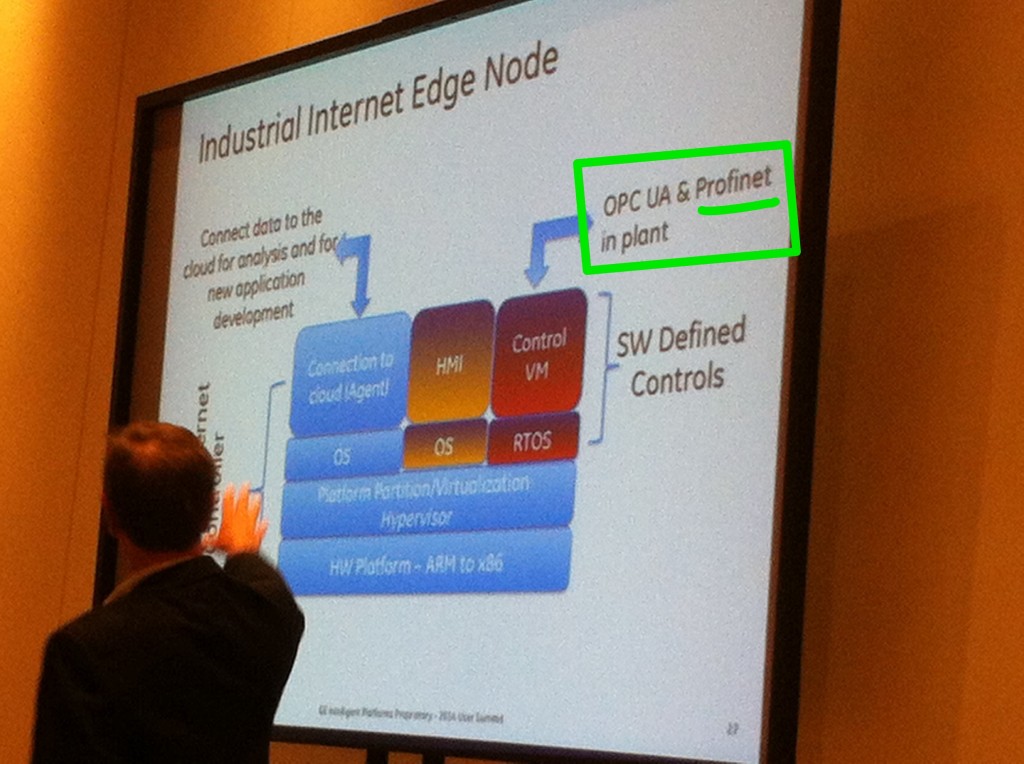I always love it when a speaker begins their presentation with: “Are you all ready to geek out for a little while?”
So began Rich Carpenter, Chief Technology Strategist for GE Intelligent Platforms, in his breakout session at the inaugural GE-IP User Summit. And while there were many interesting talks at the event, perhaps because I myself am a geek, this one stood out for me. No offense to GE Chairman Jeff Immelt of course, who was superb. The topic of Rich’s talk was on control virtualization. First a little background; what is a hypervisor? Per Wikipedia: A hypervisor is a piece of computer software, firmware or hardware that creates and runs virtual machines (think: VMWare and VirtualBox). His presentation revolved around the implementation of virtual machines in controllers of automation tasks. When this is done, there are often critical control functions, like the RTOS, mixed with non-critical functions, like an HMI or Historian. The former would be linked via PROFINET to devices for real-time control:

Obviously the challenge, and eventual responsibility of the hypervisor, is to ensure that non-critical functions do not interfere with critical control tasks. However, with the success of virtualization in the mainframe and server markets (e.g. shared hosting), the technology has evolved commercially to this point. This means it is fairly well advanced.
The other benefit of using a commercially evolved technology is the reduced cost and high speed with which it can be implemented. This theme was echoed by PI North America Board of Directors member Bernie Anger. He said that while a lot of the GE conference revolved around their notion of the Industrial Internet, the salient point is that all of this technology should be considered “off the shelf”. This notion resonated strongly with me when I look at the tools we use here at PI North America. This blog for example, is built on off-the-shelf software. It enables things like MinutePROFINET videos and PROFINEWS to be made quickly and cheaply.
– Michael Bowne
